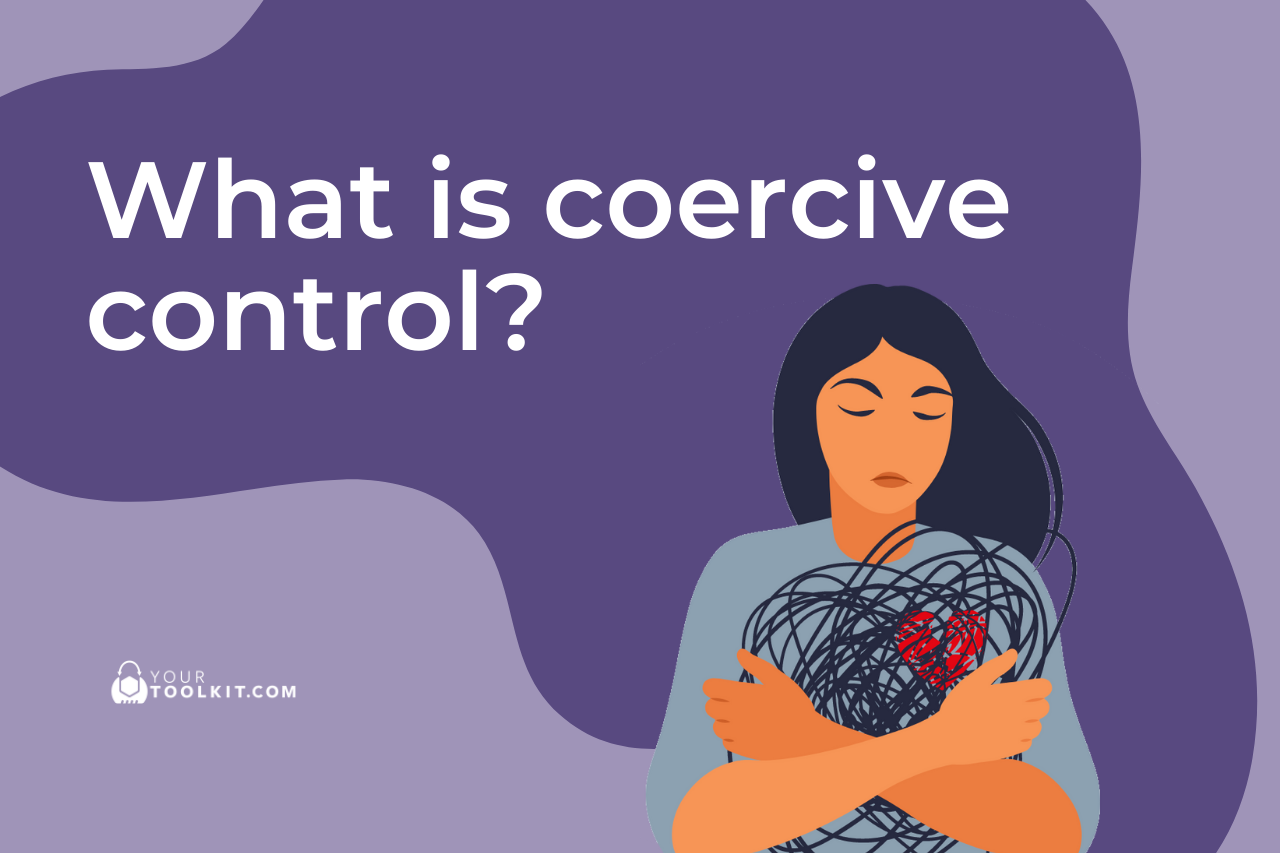Coercive control in an intimate partner relationship is when one partner uses power to limit and control the other. A pattern of behaviour may be observed, including physical abuse, sexual abuse, emotional abuse, economic abuse, threats, intimidation, isolation, blaming, minimising and exercising male privilege as abuse.
Learning to recognise abusive behaviours can help identify if you or someone you know is experiencing coercive control in their relationships. Visit Yourtoolkit.com/CCSA to find a Coercive Control Self Assessment Tool.
Remember to use safe device practices if you think your device is being monitored. Your self-assessment responses are anonymous.
Coercive control behaviours
Physical abuse
Physical abuse is a form of coercive control where physical force or aggression is used to harm another person. It might include physical assault such as beating, choking or slapping, or ‘non-physical’ abuse like threatening or pretending to hit you, damaging your property or neglecting your physical needs such as food or medical supplies.
Non-fatal strangulation or choking is also a common form of physical abuse.
Learn more about physical abuse as a coercive control behaviour.
Sexual abuse
Sexual abuse is a form of coercive control where you may be forced or pressured into unwanted sexual activity. Sexual experiences should never be forced or make you feel scared or uncomfortable. Consent is important in every intimate relationship, including marriage and long-term relationships.
Reproductive abuse is also a form of sexual abuse where one partner may force personal reproductive choices onto the other. It may impact your ability to manage period or menstrual cycles, pregnancy, birth and contraceptive methods.
Learn more about sexual and reproductive abuse as coercive control behaviours.
Economic abuse
Financial or economic abuse is a form of coercive control where money is used to harm or trap a victim survivor in an abusive relationship. This behaviour can create financial dependency and make it difficult for the victim survivor to support themselves financially.
Economic abuse can include restricting access to money, forcing you into financial decisions or sabotaging your employment and education opportunities to stop you from earning your own money.
Learn more about economic abuse as a coercive control behaviour.
Emotional abuse
Emotional abuse is a form of coercive control where an abuser destroys their partner’s self-worth through fear, isolation and control. It can leave you feeling emotionally and mentally confused, disempowered and drained.
Emotional abuse can be hard to identify and is often experienced in private.
Learn more about emotional abuse as a coercive control behaviour.
Minimising and denying as abuse
Minising and denying is a key tactic of coercive control commonly known as ‘gaslighting’. This behaviour aims to confuse or create doubt for the victim survivor, making them less likely to challenge abuse.
It might include being told your feelings are invalid, downplaying abuse or blaming you for the abusive partner’s behaviour. An abusive partner may often try to ‘flip’ or ‘blame shift’ the abuse to avoid taking responsibility for their actions.
Learn more about minimising and denying as coercive control behaviours.
Isolation abuse
Isolation is one of the most common tactics of abuse and coercive control. It aims to keep you from connecting with the outside world and seeing that something isn’t right in the relationship.
An abusive partner might distance and isolate you from your friends and family or purposefully destroy your relationship with others so you can’t confide in them.
Learn more about isolation as a coercive control behaviour.
Intimidation as abuse
Intimidation is a coercive control tactic where an abusive partner uses words, actions or implied threats to make you fear them. It can be hard to prove your experience of intimidation. You may choose to safely collect evidence or record when you think you are experiencing intimidation to see a pattern of this behaviour over time.
Learn more about intimidation as a coercive control behaviour.
Threats as abuse
Threatening behaviours in a relationship are a form of coercive control where the abusive partner forces you by creating ultimatums or threatening your safety. Threats undermine the security of your relationship.
A common example is threatening to hurt you, themselves or others if you try to leave the relationship.
Learn more about threats as a coercive control behaviour.
Blaming as abuse
Blaming is a coercive control tactic an abusive partner uses to excuse their behaviour. They may blame drugs or alcohol and other situational factors, like stress, to avoid taking responsibility for their behaviour.
Learn more about blaming as a coercive control behaviour.
Male privilege as abuse
Male privilege is the belief that men are better or hold more value than women. Often, men who use violence or control in their relationships believe women are less worthy than men and that it is their biological right to control or make decisions for their wives or girlfriends.
Experiencing coercive control from an abuser who uses their male privilege may feel like they always compete to dominate or belittle you.
Learn more about male privilege as a coercive control behaviour.
If you have experienced any of these coercive control behaviours, we encourage you to take our coercive control self-assessment to learn more about what behaviours you may be experiencing.
Yourtoolkit.com also provides a step by step guide to becoming physically, emotionally and financially empowered when experiencing domestic abuse and coercive control. Start at https://yourtoolkit.com/prepare/1a/
If you’d like to speak about your experiences with a trained counsellor, call 1800 RESPECT (1800 737 732).

